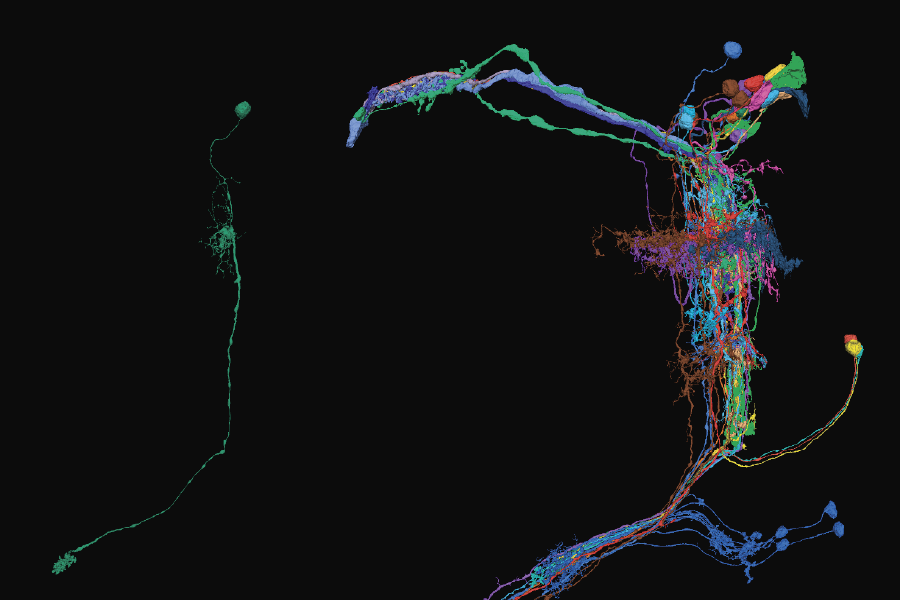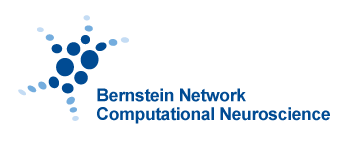Nerve cells in the visual system of flies are surprisingly heterogeneously connected
Analysis of the Drosophila melanogaster connectome as part of the FlyWire consortium provides new insights into the organization of the visual system

Photo: Marion Silies
Bernstein members involved: Marion Silies
The brain is a complex organ, and not just in humans. Even in the brain of a fly, more than 100,000 nerve cells are connected with several million synapses. Now, for the first time, an international consortium has fully reconstructed and published the nerve cells and their synaptic connections in the brain of a female fruit fly, scientifically named Drosophila melanogaster. The research group led by Professor Marion Silies at Johannes Gutenberg University Mainz (JGU) made an important contribution to the overall result with its work on the optic lobe, the part of the brain in which visual information is processed. They found that, contrary to expectations, a certain cell type in the eye of the fruit fly is not uniformly linked. “This challenges our idea of how the eye is organized,” said the neurobiologist, commenting on the results.
FlyWire consortium publishes the first complete connectome of the fly
Under the leadership of Princeton University and with the help of artificial intelligence, the FlyWire consortium has mapped the entire connectome of the Drosophila melanogaster brain. The connectome shows the connections between the nerve cells that play a crucial role in their function. Hundreds of scientists from all over the world have contributed to this work. For example, 130,000 nerve cells with 50 million synapses were reconstructed by first taking electron microscope images of wafer-thin sections of the brain and then stitching the images together. “The data set is unprecedented and will revolutionize the entire field of neurobiology,” expects Marion Silies. “We will be able to use this data to research the functioning of the brain much better in future.”
Marion Silies’ research group at the Institute of Developmental Biology and Neurobiology has specialized in the visual system and thus contributed to the overall success of FlyWire as well as discovering new aspects of visual information processing. At the center of this discovery are certain types of transmedulla cells that are located just behind the photoreceptors in the 800 individual eyes of a fruit fly. “Visual systems have a homogeneous structure, and it was thought that this homogeneity persists up to the level of synaptic circuitry,” says Silies. The principle that the eye is homogeneously connected is a conceptual idea not only in Drosophila, but also in humans. This would make sense because the environment should be processed and perceived evenly in different regions of the eye.
Nerve cells are not as uniformly connected as thought
“However, we have now discovered that the nerve cells of one type of transmedullary cell in particular, known as Tm9, are not uniformly wired, but are wired differently.” It had previously been noticed that the cells do not always react in the same way to a certain stimulus. This could now be the explanation. “Apparently the fly’s eye sees differently at different points.” For Silies, this raises the question of what the heterogeneity in the fruit fly’s visual system is for. Is it a by-product or is the variability necessary to fulfill robust functions? Silies will continue to investigate this fundamental central question as part of the RobustCircuit research group. In addition to her team, other scientists from JGU, Freie Universität Berlin, HU Berlin and the Zuse Institute Berlin are also involved. The German Research Foundation (DFG) has been funding Research Unit 5289 since 2022, and the current work on the visual system of Drosophila was also funded by an ERC Starting Grant awarded to Marion Silies.
In order to ensure that the findings on the Tm9 cells are not an exception due to the survey on just one female fly, the group also took light microscope images of several flies and thus substantiated the findings. “The next step is to find out whether the variability follows a certain pattern or is purely random,” says Marion Silies about the next tasks.
Translated from German by AL/BCOS.




